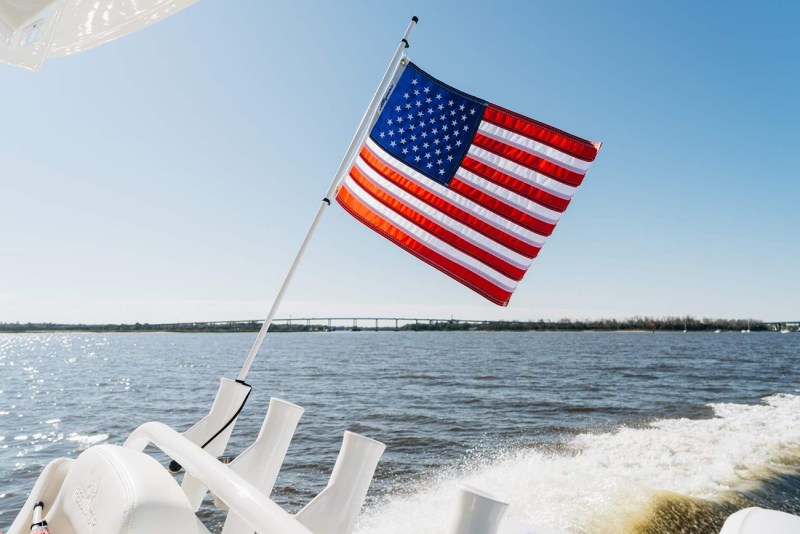
Every day, Allegiance Flag Supply is born anew in Vidalia, Ga., though company founders Katie and Wes Lyon and Max Berry might beg to differ. And they would have a point, as they began their company in Charleston, S.C., where they themselves went to school and conceived the idea of a premium, Made-in-America, United States flag. They still live in Charleston, where they headquarter their burgeoning business. But Vidalia is where the flags are born.
Known for its namesake sweet onions, Vidalia today is an agricultural town, an industry that has been a part of its fabric for centuries. But for a brief period, it wasn’t a one-trick pony. Back in the 1970s, ’80s, and ’90s, apparel manufacturing was booming. The Oxford company had its factory there, churning out shirts for department stores like JCPenney and Macy’s, and a women’s lingerie business was spinning out silky undergarments. To support these giants, smaller businesses grew in symbiotic relationships, supplying the bits and bobs they needed, while niche operations like a children’s dance costume company grew in their shade. A generation of newly skilled workers, crowding into the workforce for the first time following World War II, was in its prime, and Vidalia was just one of many towns across the South where the industry flourished.
Related Guides
But after the boom came the bust. The North American Free Trade Agreement, a 1994 deal that created financial incentives for the manufacturing of clothing outside of the States, may have hastened the end, but there were other factors that predated it. Jerry Yates, a 65-year-old Vidalia resident and 42-year veteran of the apparel manufacturing industry, including with Oxford, says that one of the biggest was its skilled labor force getting too old. These same men and women who rushed into the factories were, in the ’70s, ’80s, and ’90s, exiting them at the same rate, retiring to pensions and grandkids. For the next generation, “The garment job is not the job of choice,” Yates says. Furthermore, the average American consumer was obsessed with low prices, which could only be achieved by lowering labor costs outside of the U.S. “The customer drove it as much as legislation,” he adds.
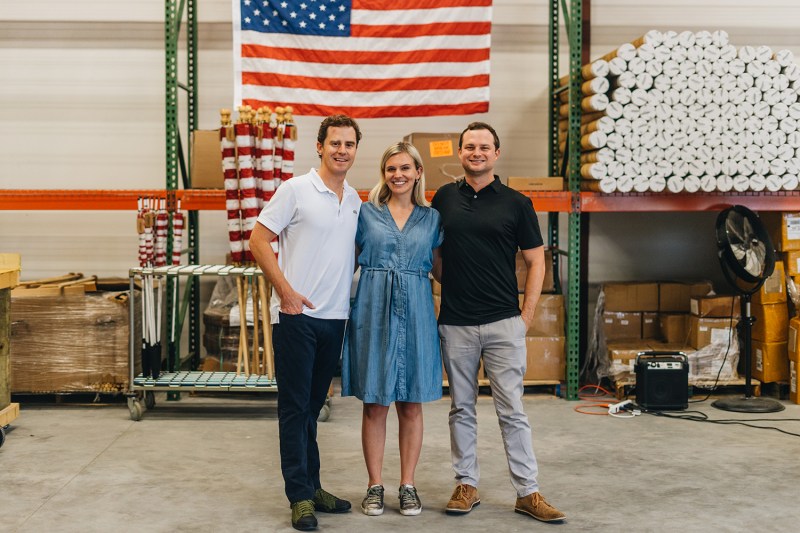
And so, year after year, Vidalia’s apparel industry bled out, drop by drop, person by person, job by job. In the town’s heyday, there were five Oxford factories in Vidalia and in its surrounding Toombs County. The last was sold in 2003, and with it, the few of its remaining skilled workforce was out of work. At the 2019 census, there were a thousand fewer residents than in 1990.
Fast-forward to five years ago. The Lyons had hung an American flag on the front of their Charleston house, and just like many Americans, they bought it from some big-box store — a Lowe’s or Home Depot or maybe through Amazon. It was cheap, but then again, all American flags were cheap. Well, that old maxim of getting what you pay for was proven true, and after a few months, their affordable flag was unraveling before their eyes. “After a few short months in flight, we were replacing it again,” Wes, 33, tells The Manual.
So he and Katie, 32, began to look for a better option. They quickly noticed a few things: First, there was no such thing as a premium American flag. In fact, you couldn’t even buy one from the companies who made them, as they only dealt in bulk, selling to warehouse-sized home and garden stores. And the other thing was that no American flag they found was made in the U.S., the result of those same bad trade deals and shifting labor markets that tanked American manufacturing decades before.
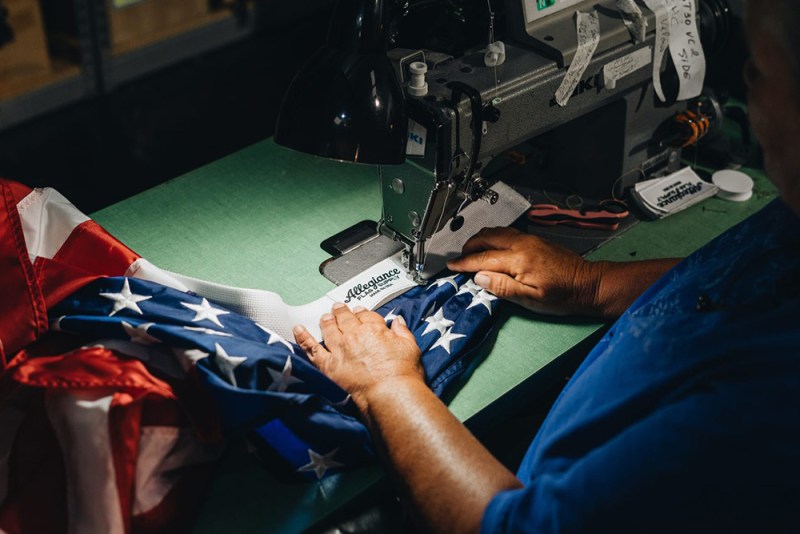
“It was crazy to us,” Wes says. “Obviously the American flag should be made here.”
Obviously. And so he and Katie dove head-first into the world of American textile manufacturing.
Their first step was to recruit Berry, a self-described “nerdy numbers guy” whom Wes had met during their time in business school at the College of Charleston almost a decade earlier. Berry, 33, remembers those early days well: “We didn’t know what we didn’t know,” he says. The three scoured the U.S. for American-made fabrics and factories that could craft high-quality textiles domestically. And that’s how a depressed manufacturing town famous for its onions and three millennials in South Carolina partnered to build a better American flag.
Wes requests that we not use the name of the factory that makes their flags. But anyone with 15 minutes and a desire to chat with the receptionist at the Vidalia Convention & Visitors Bureau can track it down. And that’s the point: Vidalia, with its surplus of seamstresses, dearth of sewing jobs, and the required manufacturing apparatus in place, was waiting for someone to track it down and put its well-oiled gears into motion.
After countless iterations, Wes, Katie, and Berry settled on 200-denier American-made nylon sprayed with a UV-protecting coating, a durable and mold-proof polypropylene header on its left. Allegiance’s flags are made with first-run material rather than the more common and cheaper seconds (think filet mignon versus a hot dog). But the biggest difference was in the assembly itself. In the Vidalia factory, they implemented double-needle lock stitching, a time-consuming, by-hand method that ensures the intertwined threads hold even if an individual stitch breaks. The right side, where machine-made flags commonly split along the stripes, was reinforced with bar-tacking at every stress point. There are more economical methods of manufacturing that can be fully automated, with reams of flags spit out at the press of a button. But to make a better flag, it takes hands, and those hands were supplied by Vidalia labor.
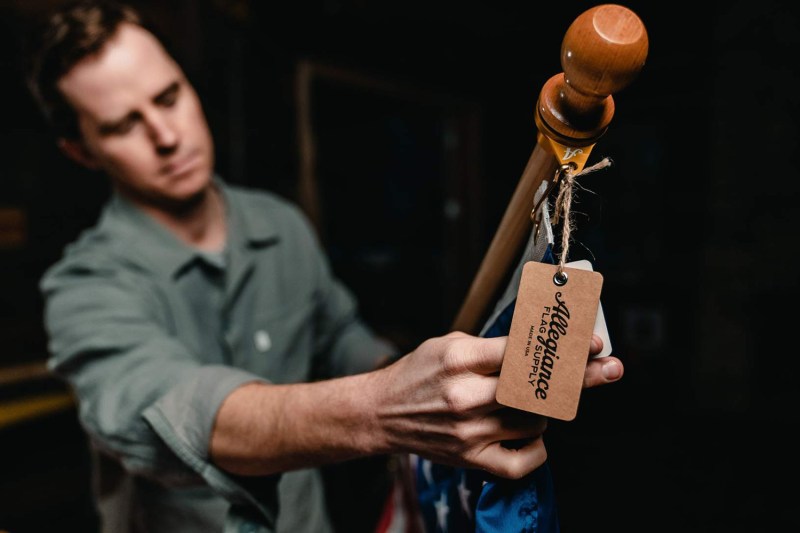
So how long does an Allegiance Flag Supply flag last? Well, your mileage may vary. Wes laughs, remembering a customer who asked if his flag could withstand being bolted to a truck and trailed down the highway. “It’s like, no, that’s hurricane-force winds for a very long time,” he says. “It’s still a piece of fabric.” Even when stationary, house-mounted flags can experience dramatically different conditions within the same town, let alone city and state. “But what we can definitely say is this is the highest quality American flag available,” Katie says. “Ours will last longer.” The couple’s own Allegiance Flag Supply flag, which hangs outside of the home they bought almost three years ago, looks as good as the day it was raised.
Like all start-ups with a genius idea, Allegiance’s seems obvious in hindsight. “There were these archaic bigger brands that had run this kind of textile manufacturing for decades, and it’s gone stale,” Katie says. “Everyone got very comfortable with the offerings, and just like anything from toothbrushes to better flip-flops, every industry has been disrupted.”
But like all disrupters, Allegiance became an overnight success only after years of grinding. Wes previously worked in higher education tech sales, and Katie sold kitchen supplies on Amazon. Berry, crunching the numbers in hotel finance, didn’t bring much more product-related knowledge, and even with the trio’s brilliant idea and superior product, it was slow going when they launched the company in 2018. All kept their day jobs, hustling on nights and weekends, until March of 2020, during those first few weeks of country-wide lockdowns. In those early pandemic days, the annual flag-buying season began while consumers moved more online than ever before, fueling an e-commerce boom. Americans suddenly felt national unity, a “We’re all in this together” ethos, as well as a drive to support small businesses that were suffering the most. “The stars were aligned,” Katie says. “If it’s not now, then it’s going to be never. Let’s go full steam.
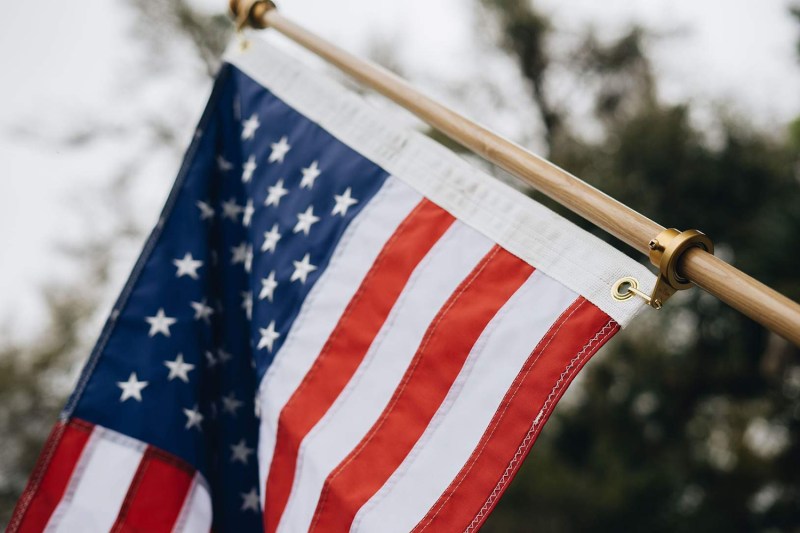
“That’s what we did,” she says, “and it’s paying dividends.”
The biggest problems the young company faces are the same the Vidalia faced decades ago. The factory’s 30 seamstresses are running at capacity, and labor, once in surplus and languishing, is now running dry. “[Sewing] is a dying art,” Berry says. “They learned it from their parents and their grandparents, passed down for generations. It seems like the younger generations just aren’t interested in it.”
Sometimes the three muse about other companies in other spaces. A thousand more razor blades? Just call your supplier in China, and they’re on a container ship the next day, steaming toward the States. Flag-making woes aside, even its secondary products can hit snags, and the recent lumber shortage made sourcing its Vermont white ash flagpoles a challenge. “We have so many obstacles to deliver the products that go out our door every single day,” Katie says.
Still, the demand is such that there’s much to be optimistic about. “There’s so much opportunity, and it really depends on what avenue we’re going to take next,” she continues. “I don’t think it’s so much are we gonna pivot and make new products, it’s what we’re going to do first.”
The American flag is a symbol, with all the charge and change that can come with it. In less than nine minutes, during the murder of George Floyd in Minnesota in May of 2020, a conversation was sparked around the lasting impact of slavery in the United States, and the flag was caught in the crossfire. A contentious presidential election a few months later only saw opposing political sides entrench themselves further, and a New York Times editorial board member said she was disturbed seeing so many American flags flying in Long Island over Memorial Day weekend. America in 2021 feels portentous — like it could go in any direction. The definition of the Stars and Bars seems to shift in the wind. And yet Katie, Wes, and Berry of Allegiance Flag Supply are more optimistic than ever.
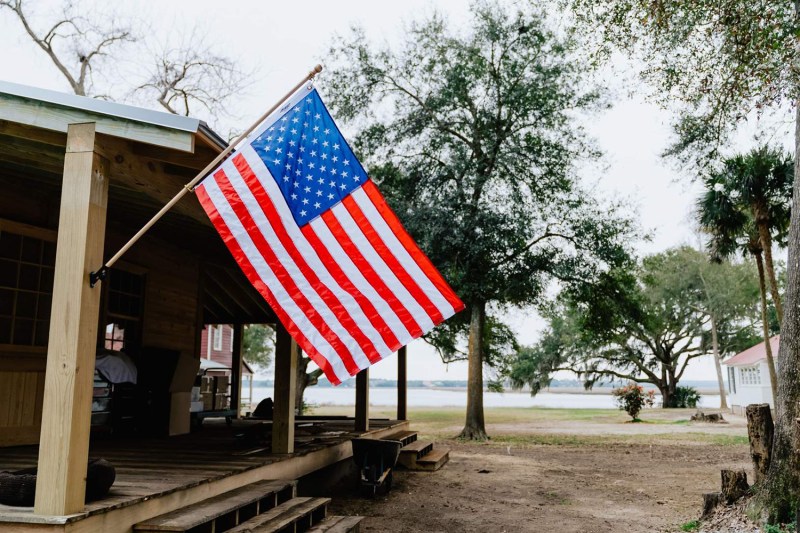
“Even though like every country, we all go through hardships, the flag is really something we look at as a unifier,” Katie says. Wes seconds this: “Certainly, we watch the news, and we know about the divisiveness across the country. But for whatever reasons we’re hearing from people on both sides of the aisle that what we’re doing is a unifier.”
From his home in Vidalia, Yates continues working in the apparel manufacturing industry, albeit primarily with factories in the Dominican Republic. There’s a small value in American-made clothing, he says, but in his estimation, consumer demand is not enough to shift jobs back to the States. In 1990, 70% of U.S. clothing was made outside of the country. Today, it’s 98%.
But even for such a grizzled veteran, he’s awed by the work that Wes, Katie, and Berry are doing with Allegiance Flag Supply. It goes beyond pragmatism and economic realities. “There is something about seeing an American flag that is made in the U.S.A. It’s right,” he says. “I think I understand the way this whole business works, but I’d be willing to pay a greater [price], knowing that it was made in the USA.”
Then he seems to shrug, more than four decades of experience in his shoulders. “But that’s just me.”
Editors' Recommendations
- A brief history of Mardi Gras – find out how this tradition with beads started
- Reading this $10 book can save you thousands on golf lessons



